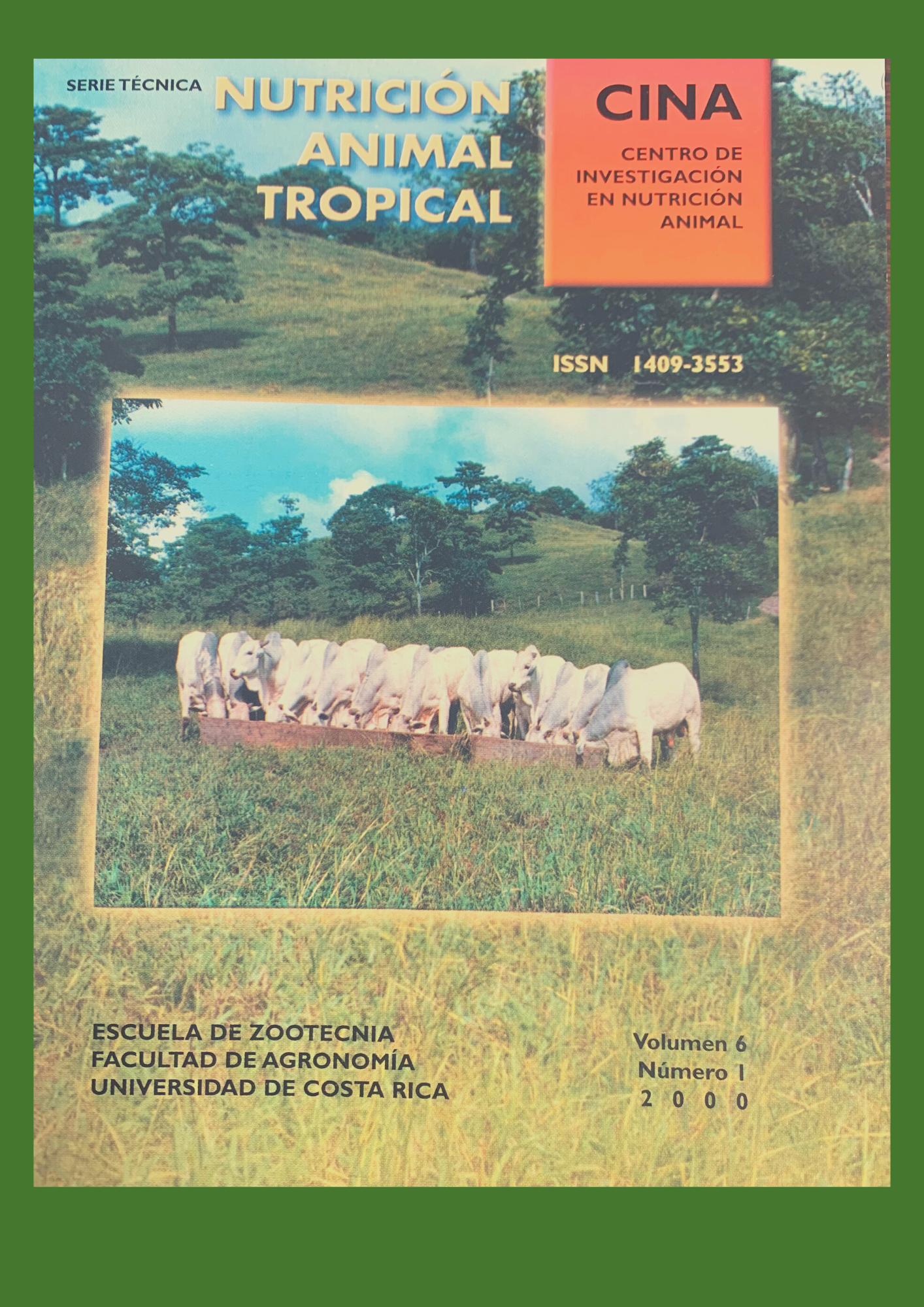Resumen
Energy nutrition of dairy cattle. A review. Energy is a subtle term and is defined as the capacity for doing a work. In dairy cattle nutrition, feeds have that capacity and the work is the maintenance of the cow, milk production and reproduction. About 75% of dry matter consumed by the cow is used by the organism to generate and meet its energy requirements. Tropical grasses are characterized by having low or medium energy levels, so energy supplementation of animals grazing tropical grasses requires special attention in order to get good production levels. Energy contents of grasses are difficult to estimate and it is not possible to do it through regular laboratory analytical methods. However, lineal equations based on the ADF content of forages are frequently used to achieve this goal, as well as mechanistic models using different chemical fractions of forages. Cows experience a negative energy balance during the first trimester of lactation, which is compensated by energy body reserves mobilization. A cow can produce 8 to 10 kg of milk from the energy supplied by a kg of adipose tissue, or an average of 636 kg per each unit of body condition score. Milk production from each unit of body condition score follows an exponential trend, hence the importance of a proper body condition at calving. Adipose tissue mobilization as well as low feed intake during early lactation makes fresh cows more tolerant to heat stress. To have a good production cycle, cows should begin their lactation with a body condition score of 3.5, then this will drop to 2.5 by the time of first insemination. As lactation proceeds, cows should begin to replenish their energy and fat reserves to the point where they have a body score of 3 and remain at this score or near throughout the majority of lactation. In late lactation animals should gain weight to be dried off at 3.5. If a cow calves in a poor body condition (<3), or her energy nutrition is optimal during early lactation, she will suffer a severe negative energy balance, which will limit her to produce as much milk as the dietary energy will allow. Moreover, she will be more susceptible to metabolic diseases such as ketosis and delays in returning to ovarian activity. Likewise, when animals are over conditioned during late lactation and calve with a body condition score of 4 or higher, they are predisposed to suffer metabolic imbalances such as ketosis or displaced abomasum and severe reproductive problems during the peripartum

